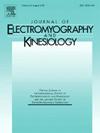The effect of skilled motor training on corticomotor control of back muscles in different presentations of low back pain
Abstract
Transcranial magnetic stimulation (TMS) has revealed differences in the motor cortex (M1) between people with and without low back pain (LBP). There is potential to reverse these changes using motor skill training, but it remains unclear whether changes can be induced in people with LBP or whether this differs between LBP presentations. This study (1) compared TMS measures of M1 (single and paired-pulse) and performance of a motor task (lumbopelvic tilting) between individuals with LBP of predominant nociceptive (n = 9) or nociplastic presentation (n = 9) and pain-free individuals (n = 16); (2) compared these measures pre- and post-training; and (3) explored correlations between TMS measures, motor performance, and clinical features. TMS measures did not differ between groups at baseline. The nociplastic group undershot the target in the motor task. Despite improved motor performance for all groups, only MEP amplitudes increased across the recruitment curve and only for the pain-free and nociplastic groups. TMS measures did not correlate with motor performance or clinical features. Some elements of motor task performance and changes in corticomotor excitability differed between LBP groups. Absence of changes in intra-cortical TMS measures suggests regions other than M1 are likely to be involved in skill learning of back muscles.

 求助内容:
求助内容: 应助结果提醒方式:
应助结果提醒方式:


